Skilhunt M1
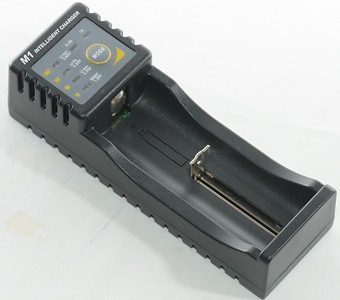
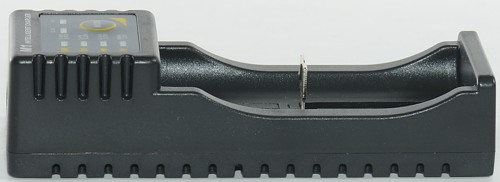
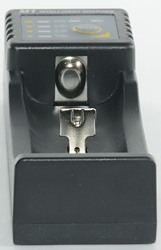
Skilhunt usual sells flashlights, but has recently started on chargers. This charger is a universal 1 channel charger that can handle multiple chemistries and battery sizes. It does also work as a power bank.


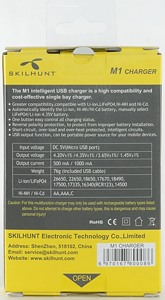

I got the charger in a cardboard box with specifications on it.
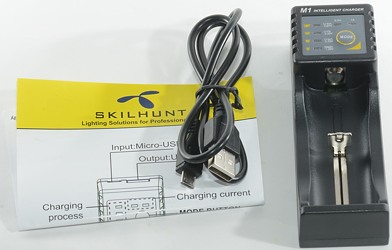
The pack contained the charger, a usb cable and a instruction sheet.
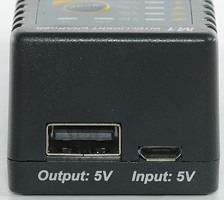
The charger is powered from micro usb and has a full size usb connector for power bank output.
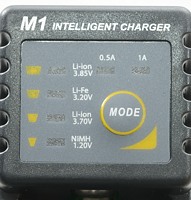
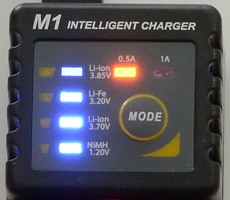
The charger has two red leds to show selected current and four blue leds in a row to select voltage and show battery level.
The button has multiple functions:
When a battery is put into a powered charger, it can be used to select LiIon voltage (NiMH is selected automatic).
When charger is powered a long press (2 seconds) will change between 0.5A and 1A charge current.
A fast click when charging will show the selected battery type.
When used as a power bank a press on the button will turn the usb power on.

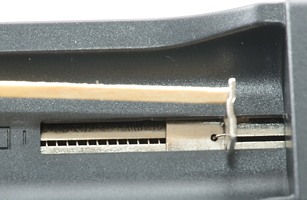
The charger uses the typical slider construction, it can handle batteries from 33mm to 70mm.












The charger can handle 70mm long batteries, inclusive flat top cells, this means most protected cells.
Measurements charger
- LiIon and NiMH Batteries will be discharged with 0.1mA when power is off.
- Charges LiIon batteries with 0.5mA when connected to power.
- Charges NiMH batteries with 2.2mA when connected to power.
- When battery is 0 volt the charger will charge with 3mA, this is enough to reset a protection.
- From 0.25 volt on the battery the charger will reconize it and start charging.
- Between 0.25 volt and 1.6 volt a battery is assumed to be NiMH.
- Between 1.6 volt and 2.2 volt the charger will charge with less than 2mA and not allow selection of battery type.
- Above 2.2 volt a battery is assumed to be LiIon.
- Charger will not restart if battery voltage drops.
- Charger will restart charging after power loss, or battery insertion.
Charging 4.20 volt LiIon
.png)
The charger has a fine CC/CV voltage charge curve, it starts reducing current a bit early, due to voltage constrains, this will give slightly longer charge time.
.png)
.png)
No surprise on these two cells.
.png)
Reducing the charge current to 0.5A works fine, except the termination current is not reduced (Cells will miss the last few percent of the charge).
.png)
With this older cell the current reduction starts very early as expected.
.png)
.png)
Good charging on these smaller cell, again the higher termination current means a few percent loss in capacity.
.png)
Adding a resistor in series with the usb power supply to simulate a long cable or weak supply did not prevent the charger from doing a good job, but it needed some more time.
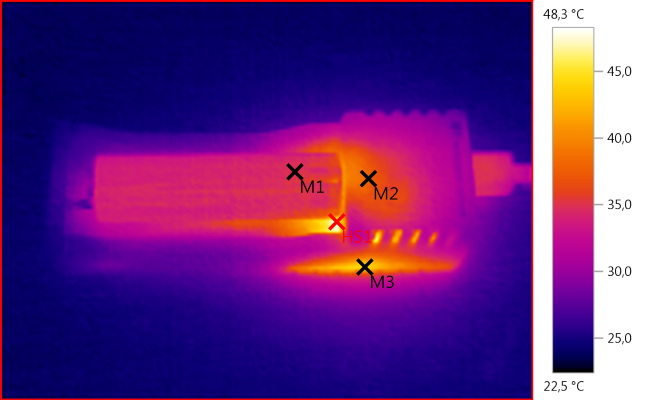
M1: 35,1°C, M2: 37,7°C, M3: 44,4°C, HS1: 48,3°C
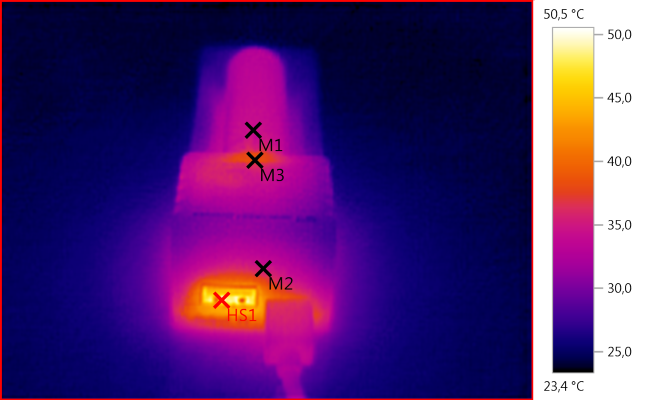
M1: 34,4°C, M2: 35,0°C, M3: 38,6°C, HS1: 50,5°C
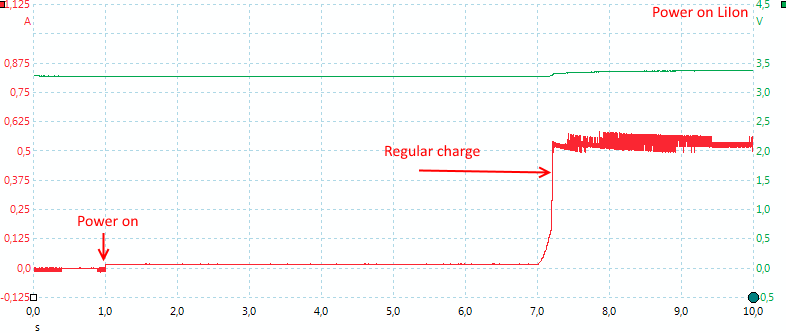
The charger needs some time to start up, this is because it is waiting for voltage selection.
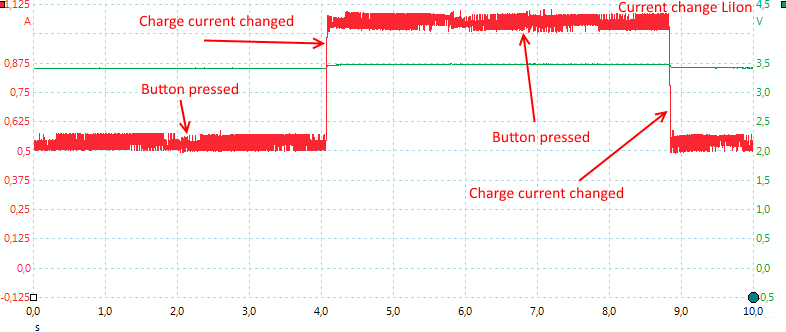
There is no problem with changing current while charging.
Charging 4.35 volt LiIon
.png)
The 4.35 volt charge works as expected.
Charging 3.60 volt LiIon
.png)
.png)
Both LiFePO4 cells is charged fine, but the voltage is a bit high (This is not a big problem with LiFePO4).
Charging NiMH
.png)
This is a good NiMH charge with -dv/dt termination and no trickle charge.
.png)
Using 0.5A charge current the -dv/dt signal is nearly gone, but the charger do termination when the battery is full.
.png)
On this cell it looks like a voltage termination.
.png)
Here it is again a -dv/dt termination.
.png)
This cell is nearly hopeless to termination on, but the charger did stop.
.png)
The AAA cell is stopped on voltage.
.png)
Fast detection of a full cell, this is voltage termination.
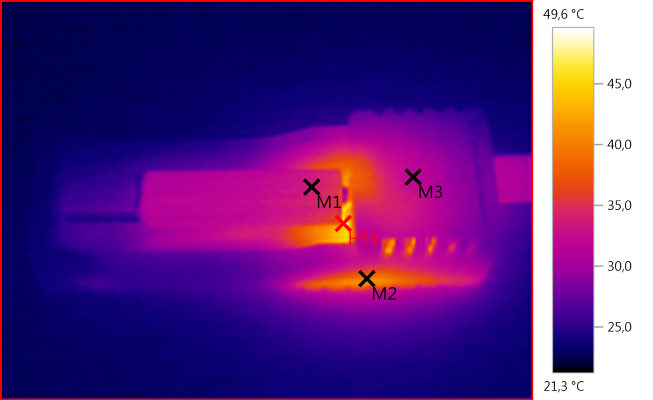
M1: 33,7°C, M2: 40,0°C, M3: 31,9°C, HS1: 49,6°C
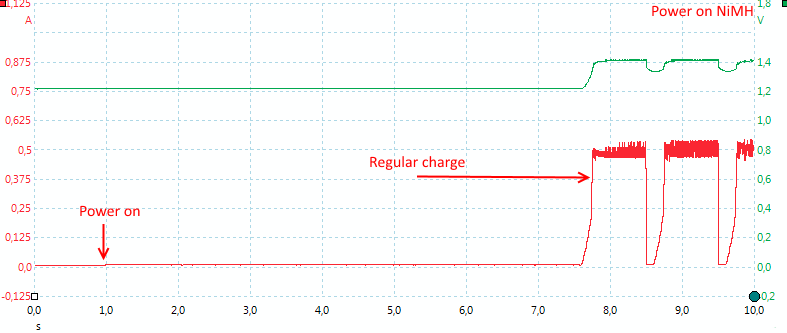
The charger is also slow to start with NiMH, but it is not possible to select any other battery type.
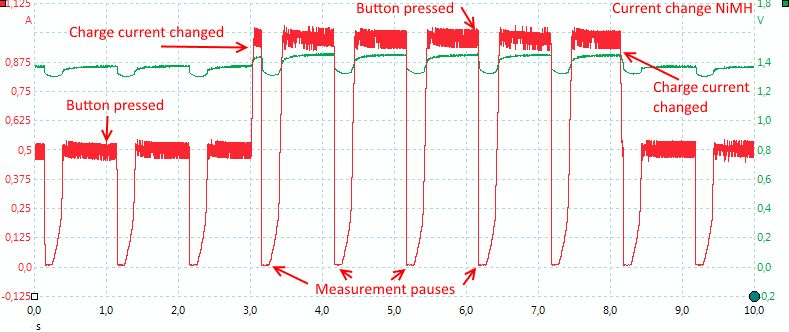
There is no problem with changing current while charging. The charger uses the typical pulsing, where it can measure voltage with current off.
Power bank
- USB output will turn off after 10 seconds with less than 63mA load.
- When input power is applied, usb output will be off.
- Mode button can be used to turn usb output on.
- USB output is coded as usb charger (DCP).
%20load%20sweep.png)
USB output can deliver 1.3A before it starts dropping, the overload protection first kicks in at 2A.
%20usb%20out%20%2010ohm.png)
Running with 0.5A load looks very good.
%20usb%20out%20%205ohm.png)
Increasing to 1A do have some problems the last 5 minutes, but generally works fine.

The noise is fairly good at 0.5A load with 21mV rms and 200mVpp

At 1A the noise increases, but is still acceptable with: 40mV rms and 310mVpp
Conclusion
The charger is not perfect, it has a few small issues, but nothing serious with any of the functions.
This makes it a good charger for all supported batteries and also a good power bank.
Notes
The charger was supplied by Skillhunt for a review.
Here is an explanation on how I did the above charge curves: How do I test a charger
Read more about how I test USB power supplies/charger

























.png)
.png)
.png)
.png)
.png)
.png)
.png)
.png)




.png)
.png)
.png)
.png)
.png)
.png)
.png)
.png)
.png)
.png)



%20load%20sweep.png)
%20usb%20out%20%2010ohm.png)
%20usb%20out%20%205ohm.png)

